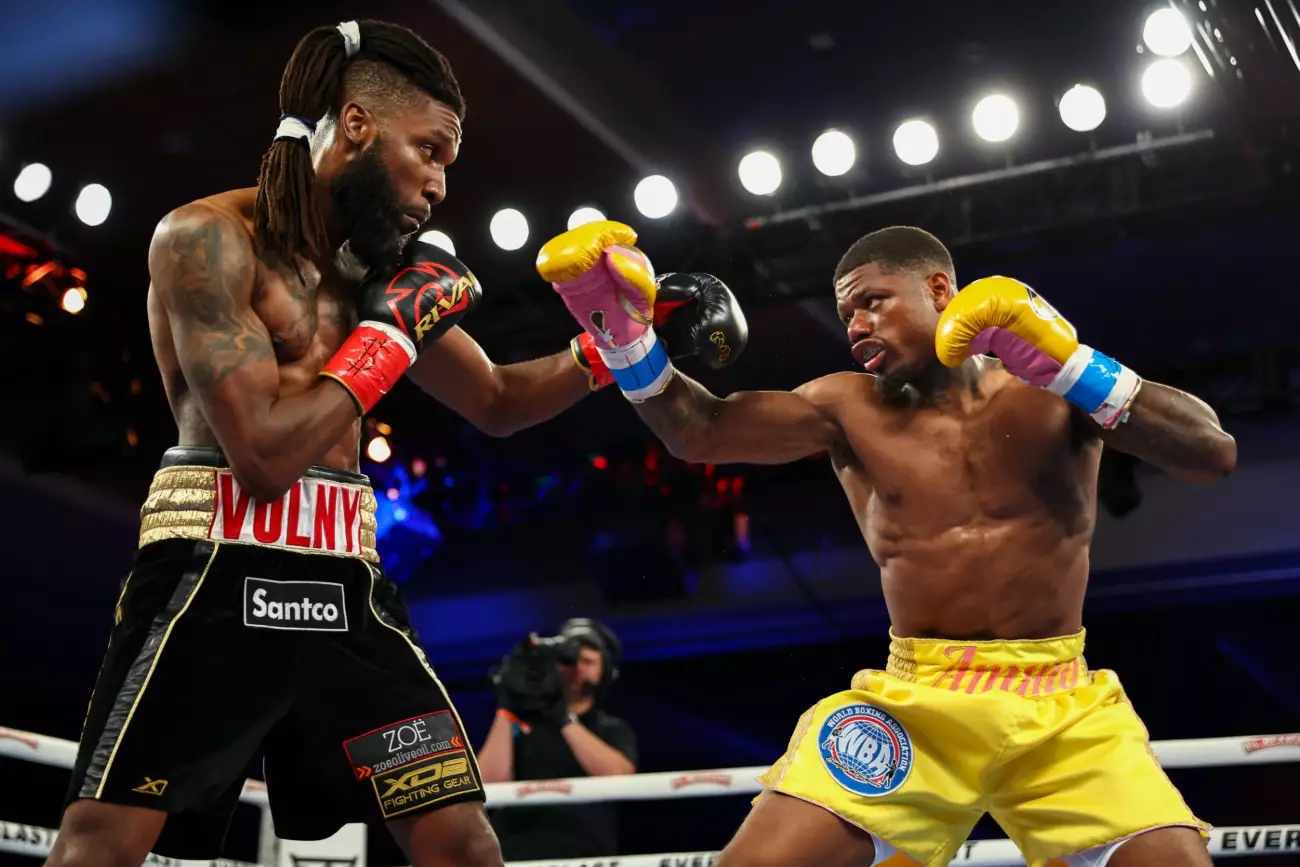In a highly anticipated middleweight bout, Austin “Ammo” Williams faced off against Patrice Volny at the Caribe Royale in Orlando, Florida, securing a hard-fought unanimous decision victory. Williams, now 18-1 with 12 knockouts, showcased his resilience and work ethic over 12 rounds, effectively outworking Volny, who suffered a setback with a record of 19-2 and 13 KOs. Promoted under the illustrious Eddie Hearn, Williams appeared determined to make a mark, but the match exposed a few glaring deficiencies in his boxing arsenal.
While Williams’ volume of punches kept him ahead in the judges’ eyes, it arguably lacked the formidable impact needed to decisively win the fight. Fans were left debating whether sheer work rate outweighed Volny’s more powerful and accurate strikes. This type of matchup often breeds controversy, as observers speculated that a draw might have been a more appropriate outcome given the balance of power on display. The scoring—118-110, 116-112, and 115-113 in favor of Williams—sparked mixed reactions, garnering scrutiny especially given the apparent discrepancies between perceived effectiveness and volume.
Power vs. Precision: The Crux of the Debate
The heart of the discussion surrounding this fight lies in the contrasting styles of the two fighters. Volny’s punches certainly carried more authority, a fact that made the bout intrinsically compelling. Conversely, Williams opted to engage in a high-volume approach that, while effective in accumulating points, lacked the knockout power that spectators often crave. The critical takeaway is that in the world of boxing, winning is not solely about showcasing technique; it’s equally about delivering memorable moments and imposing strength—a balance Williams seems to have yet to fully master.
This fight raises crucial questions about Williams’ readiness for higher-tier competition in the middleweight division. Promoter Eddie Hearn’s eagerness to position him for a title shot post-fight is a bold strategy. The middleweight division is littered with elite talent—Erislandy Lara, Carlos Adames, and Janibek Alimkhanuly—each capable of exploiting Williams’ weaknesses should he enter the ring against them without substantial improvement. The gap between his current performance and that required to secure a major title feels substantial.
Edgar Berlanga’s Resurgence: A Different Narrative
On the same undercard, Edgar Berlanga redeemed himself with a first-round knockout of Jonathan Gonzalez-Ortiz, a stark contrast to Williams’ drawn-out victory. Berlanga, now 23-1, appeared to rediscover his ferocity, scoring three knockdowns within a single round. This performance sends reverberations throughout the boxing community, particularly as it contrasts sharply with Williams’ lack of knockout power in his fight.
Berlanga’s resurgence emphasizes the unpredictability of boxing careers—how one fighter can stumble while another finds their stride can change the trajectory of their professional lives. With Berlanga’s performance, he has reignited interest in his journey, perhaps positioning himself as a contender for future title shots. The question remains: can Williams adopt a similar mindset and improve his skill set to be competition-ready?
Ultimately, these contrasting performances from Williams and Berlanga illustrate the diverse narratives at play in the boxing world. As both fighters navigate their paths, fans can only hope for growth and engaging matchups, examining whether Williams can rise to the occasion or if Berlanga will continue to rebuild his career with power and precision.


Leave a Reply